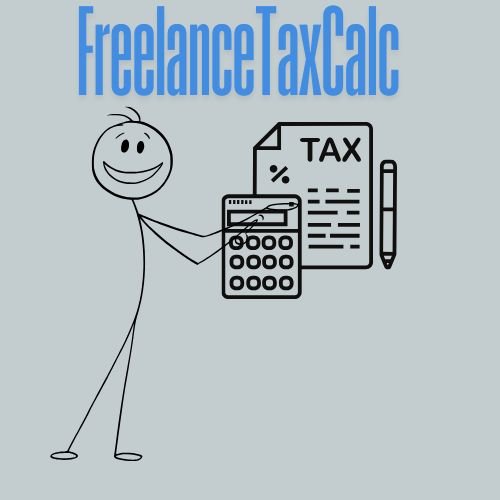Quarterly tax
Freelancers and self-employed professionals quickly discover that managing taxes is not as straightforward as it is for traditional employees. Instead of having an employer withhold taxes from each paycheck, independent workers must take responsibility for sending estimated payments to the IRS throughout the year. These payments are commonly known as quarterly estimated taxes. Missing a deadline can result in penalties and interest, which is why understanding the schedule and the filing process is so important. This article provides a comprehensive guide to quarterly tax deadlines, how to file correctly, and what freelancers should keep in mind to stay compliant.
Why Freelancers Must Pay Quarterly Tax
When you work as a freelancer or independent contractor, no taxes are withheld from the payments you receive from clients. The IRS expects you to pay as you earn, which is why quarterly estimated payments exist. If you owe at least $1,000 in taxes after subtracting credits and withholdings, you are required to make quarterly payments. According to the IRS, failing to do so may lead to penalties even if you file your annual tax return on time.
This rule ensures that tax revenue flows into the system consistently, just as it does when traditional employees have taxes withheld automatically. For freelancers, quarterly deadlines are essentially a substitute for employer payroll withholding.
(Internal link suggestion: link this section to your site’s Freelance Tax Basics page for beginners who need an overview of how taxes work for the self-employed.)
The Four Quarterly Tax Deadlines
Quarterly tax deadlines are based on when income is earned, not on evenly spaced calendar quarters. This schedule can be confusing for new freelancers. Here are the official due dates for estimated taxes:
- First Quarter (January 1 – March 31): Due April 15
- Second Quarter (April 1 – May 31): Due June 15
- Third Quarter (June 1 – August 31): Due September 15
- Fourth Quarter (September 1 – December 31): Due January 15 of the following year
These dates apply to most taxpayers, but if a deadline falls on a weekend or federal holiday, the due date shifts to the next business day. The IRS posts updates each year, and it is best to confirm on the IRS Estimated Tax Due Dates page to avoid surprises.
(Internal link suggestion: link this section to a Quarterly Tax Calendar page or downloadable PDF you can create for readers.)
How Much Should You Pay Each Quarter?
The IRS requires freelancers to pay enough each quarter to cover expected income tax and self-employment tax. Self-employment tax accounts for Social Security and Medicare contributions, which would normally be split with an employer. For 2025, the self-employment tax rate is 15.3% on net earnings up to the Social Security cap.
To calculate how much to pay, you can:
- Use your prior year’s tax liability as a benchmark, paying at least 100% of last year’s taxes (110% if your income was higher than $150,000).
- Estimate your current year’s income and expenses, then calculate your tax liability based on those projections.
The IRS provides Form 1040-ES, which includes worksheets and instructions. You can download it directly from the IRS website.
(Internal link suggestion: link this section to your upcoming Top 10 Freelance Tax Deductions You Might Be Missingpost, since deductions directly impact quarterly payments.)
How to File Quarterly Taxes
Filing quarterly taxes is a two-step process: calculating what you owe and submitting payment.
- Calculate your income and expenses. Use accounting software or spreadsheets to track income from clients and deductible expenses. Subtract expenses from gross income to arrive at net earnings.
- Complete Form 1040-ES. This form helps you determine the exact amount you should pay.
- Submit payment. The easiest method is the IRS Direct Pay system, which allows you to send payments directly from your bank account. Other options include the Electronic Federal Tax Payment System (EFTPS) or mailing a check.
Most freelancers prefer electronic filing since it provides instant confirmation and reduces the risk of missed deadlines.
(Internal link suggestion: link this section to a future Freelance Tax Calculator Tool page once your site’s calculator is ready.)
Avoiding Penalties
One of the most common mistakes freelancers make is waiting until the end of the year to pay. If you underpay each quarter, even if you make a lump sum at year’s end, the IRS may impose penalties. The best way to avoid penalties is to either:
- Pay 100% of the prior year’s tax liability (safe harbor rule).
- Or pay at least 90% of the current year’s estimated tax.
The IRS Penalty for Underpayment of Estimated Tax provides details on how penalties are calculated. Freelancers who earn irregular income may need to adjust payments each quarter to reflect fluctuations.
(Internal link suggestion: link this to your site’s Freelance Writer Side Hustle post, since side hustle income can push freelancers into needing quarterly payments.)
State Quarterly Tax Deadlines
Federal quarterly tax deadlines are only part of the picture. Many states require their own estimated payments, often on the same schedule as the IRS but with separate rules. For example, California and New York have slightly different filing requirements. Checking with your state’s Department of Revenue or using a tax professional is the safest way to ensure compliance.
You can find state-specific filing details on the Federation of Tax Administrators website.
Tools and Resources for Freelancers
Freelancers often find quarterly tax management overwhelming. The good news is there are tools that simplify the process. Accounting software such as QuickBooks Self-Employed or FreshBooks provides quarterly tax estimates and reminders. The IRS also offers the Tax Withholding Estimator, which can be used to calculate estimated payments more precisely.
Your own FreelanceTaxCalc.com calculator can play an important role here by providing custom quarterly estimates based on freelance income and deductions.
Recordkeeping Tips
Good recordkeeping makes quarterly filing less stressful. Freelancers should maintain organized files that include:
- Income records (invoices, 1099 forms, payment statements)
- Expense receipts and logs
- Bank statements
- Copies of filed Form 1040-ES and payment confirmations
According to the IRS Small Business Recordkeeping Guide, accurate records not only simplify filing but also protect you in the event of an audit.
Quarterly Taxes vs. Annual Tax Filing
Paying quarterly taxes does not replace filing an annual tax return. Instead, it ensures that you remain compliant throughout the year. At year’s end, you must still file Form 1040, reporting total income, deductions, credits, and tax owed. Any quarterly payments already made are applied to your final balance. If you overpay, you may receive a refund. If you underpay, you will owe the difference.
This dual responsibility often surprises new freelancers, but it is essential to keep both processes in mind.
Common Mistakes to Avoid
Freelancers often encounter the same problems with quarterly taxes. Some of the most common mistakes include:
- Missing deadlines by assuming quarters follow the calendar evenly
- Failing to set aside money throughout the year for taxes
- Underestimating income and paying too little
- Forgetting state quarterly taxes
- Ignoring self-employment tax in calculations
Awareness of these pitfalls makes it easier to avoid them and build good financial habits.
Final Thoughts
Quarterly tax deadlines may seem overwhelming at first, but with preparation and the right resources, freelancers can handle them smoothly. By tracking income, estimating correctly, and submitting payments on time, you not only avoid penalties but also gain peace of mind. Remember that each April, June, September, and January deadline plays a role in keeping you compliant. Tools like IRS Direct Pay, accounting software, and tax calculators can simplify the process.
Ultimately, quarterly taxes are just another part of the freelance lifestyle—manageable once you build the habit. Take the time to prepare now, and you will save yourself headaches in the future.
Our Authority Sources
- IRS: Estimated Taxes
- IRS: Direct Pay
- IRS: Recordkeeping
- Federation of Tax Administrators: State Tax Forms
- American Heart Association: Added Sugars


